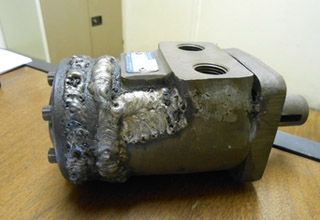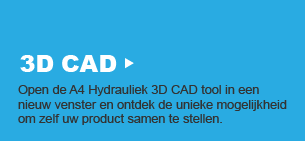My five-year-old son is going through a phase where he is appreciating scary concepts, such as zombies and monsters—but doesn’t yet have the gall to withstand their presence within his comfort zone. Last year, he wanted to be a zombie for Halloween, partly due to his fascination with Plants vs. Zombies. I took it upon myself to create his costume, complete with rotting flesh, torn clothing and “zombie dirt.”

As you can see, he was quite horrifying; enough that he couldn’t look at himself in the mirror, and he easily terrified his younger sisters. He was happy knowing he would be scaring other children of the neighbourhood just as he scared himself. It wouldn't be Halloween if kids weren’t just a little scared, but that’s half the fun when you’re an adult with small children. What’s not fun, however, is being an adult and being afraid of things not meant to scare you.
I shouldn’t be scared by hydraulics, but some of the things people come up with are downright spine-chilling. It’s odd, these days, how you can’t install an electrical outlet in your home without an advanced degree in electrical, but any old schmuck can jury-rig a hydraulic powered picnic table from paperclips and forty-year-old tractor hydraulics.
It is the season to scare, so I’ll pass along these hair-raising atrocities for your enjoyment….
•A cartridge-style relief valve with the cartridge installed into the work port rather than the cavity
Char Lynn1
Well there’s your problem right there; the shaft key is missing.
•A Char-Lynn motor Frankenstein weld repair (what’s scarier, is apparently it still worked!)—see photo at left
•Teflon tape used on SAE and JIC fittings (much more common than I’d hope)
•Black pipe used for high pressure lines
•A relief valve used as an inline flow control
•A hydraulic filter cart used to vacuum up an oil spill
•Velocity fuses; enough said
•Suction strainers … what is this? 1970?, and
•Accumulators charged with compressed air, rather than nitrogen.

I have more examples too detailed to list, but there are application mistakes everywhere in the world of hydraulics. Some are downright scary and unsafe, which is why it’s so important to work with qualified professionals in the design of a hydraulic system. It is especially critical to ensure the person you’re working with has all the information for the project to intelligently apply a package that works as the end-user intended. So don’t wait until the project is half-finished and then give the professional half-details; include them from the concept phase.
By Josh Cosford











